These animal walks for kids are a fun and engaging way to work on core strengthening, upper and lower extremity strengthening, sensory regulation, and physical conditioning.
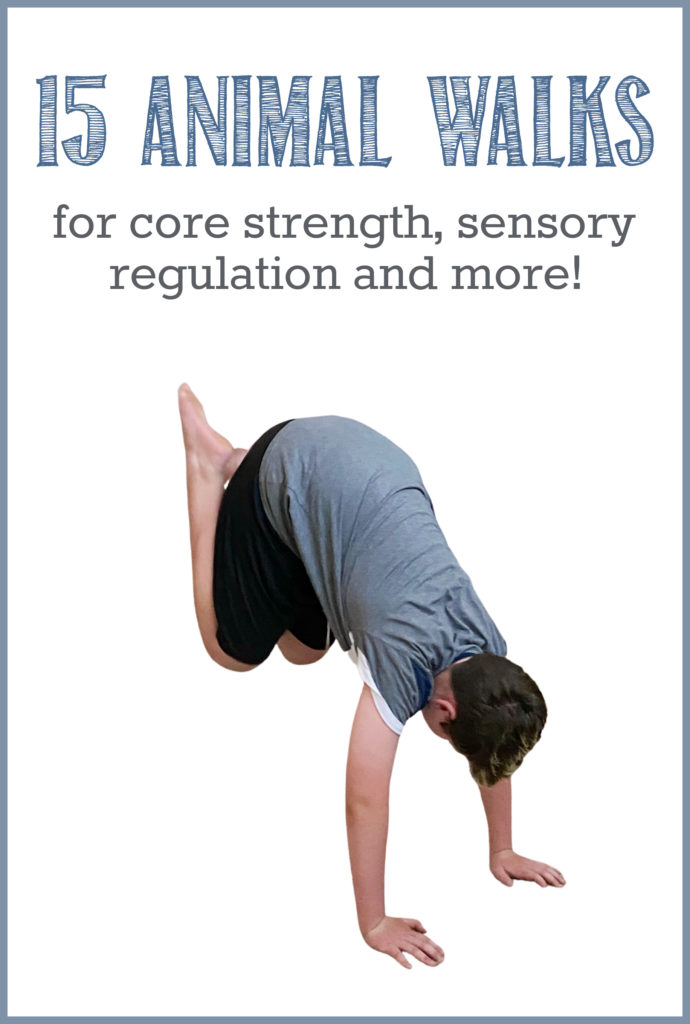
Benefits of Animal Walks FOR KIDS {And Adults too!}
Animal walks are a creative way to incorporate gross motor skills and strengthening into your child’s activities. While your kids will just think they’re fun, animal walks actually provide a number of physical and emotional benefits.
Helps with CORE STRENGTHENING
Animal walks are a great way to activate those core muscles! As kids move in and out of a variety of positions, the core muscles are working hard to help stabilize the trunk and provide a strong foundation for those arms and legs to work.
WORKS ON WHOLE BODY STRENGTHENING
Animal walks work on strengthening a variety of muscles in both the upper and lower extremities. The more animal walks you do, the more muscles you’ll target!
PROVIDES UPPER EXTREMITY WEIGHT BEARING
Many of the animal walks incorporate upper extremity weight bearing activities. Not only does this help to strengthen the arm muscles, but it also helps to improve scapular {upper back} stability. In turn, a stable shoulder girdle can help with fine motor skills such as writing, drawing and cutting.
Stimulates Creativity
Animal walks encourage imaginative play and can be used in a variety of different ways. Let your children lead, and they’ll probably come up with some creative ways to
Addresses sensory needs
Animal walks provide a lot of compression and sensory input to the joints and muscles. This propriocpetive and vestibular input can help to aid in sensory regulation and calm kids. This deep pressure also helps to strengthen their sense of balance and improve body awareness.
IMPROVES GENERAL PHYSICAL FITNESS
Because animal walks engage so many different muscles, it’s a great way to burn off some of that energy and improve cardiovascular health. If your focus is more on physical fitness, try work on keeping the kids moving as much as possible to keep the heart rate up.
Animal Walks FOR KIDS
There are lots of different animal walks that you can come up with, but I have 15 fun animal walk ideas to help get you started. Some of them are harder than others, but they can always be modified to a more appropriate level if needed.
When you’re picking which ones to do, choose activities that work on a variety of different positions so you’re targeting as many different muscles as you can. I’ve noted what each animal walk is especially helpful for so you can use that for a guide. The most important thing is to just have fun with them and keep moving!
Crab Walk
Sit on the ground with feet on the floor and palms on the floor behind shoulders. Tightening abdominal muscles and lift body off the ground with your weight balance on your feet and hands. Move forwards, backwards or sideways moving on hands and feet. For kids that have difficulty maintaining the position with movement, practice it statically working on lifting bum off the floor as far as possible.
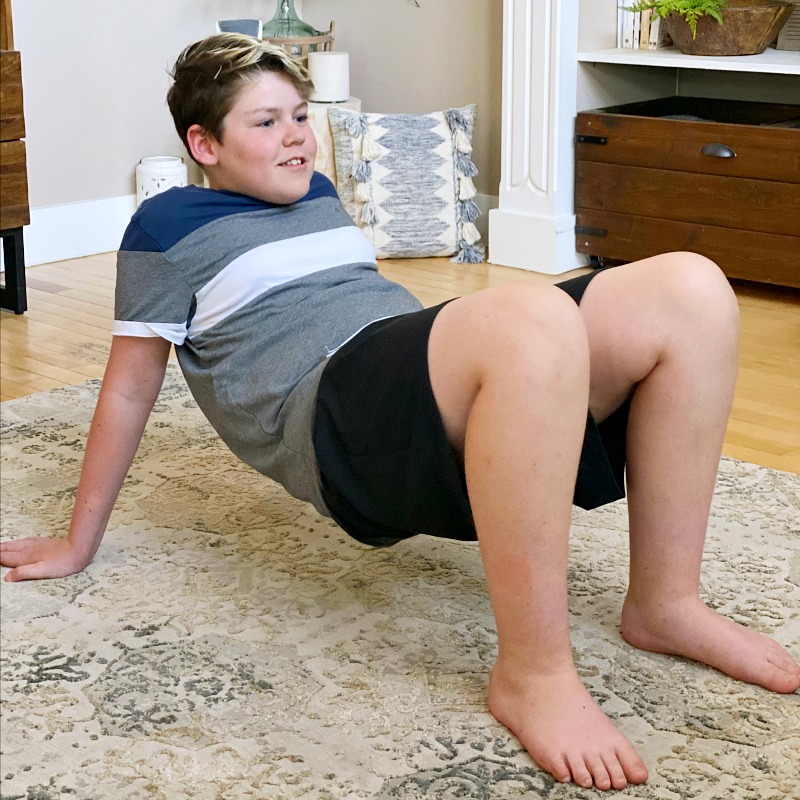
Helpful For: scapular stability, arm strengthening, core strengthening, hamstring strengthening
Bear Walk
Walk up on hands and feet trying to keep the back as straight as possible and the bum up in the air. The straighter the back legs and the more the heels are down, the more stretching you will get in the hamstrings and calf muscles.
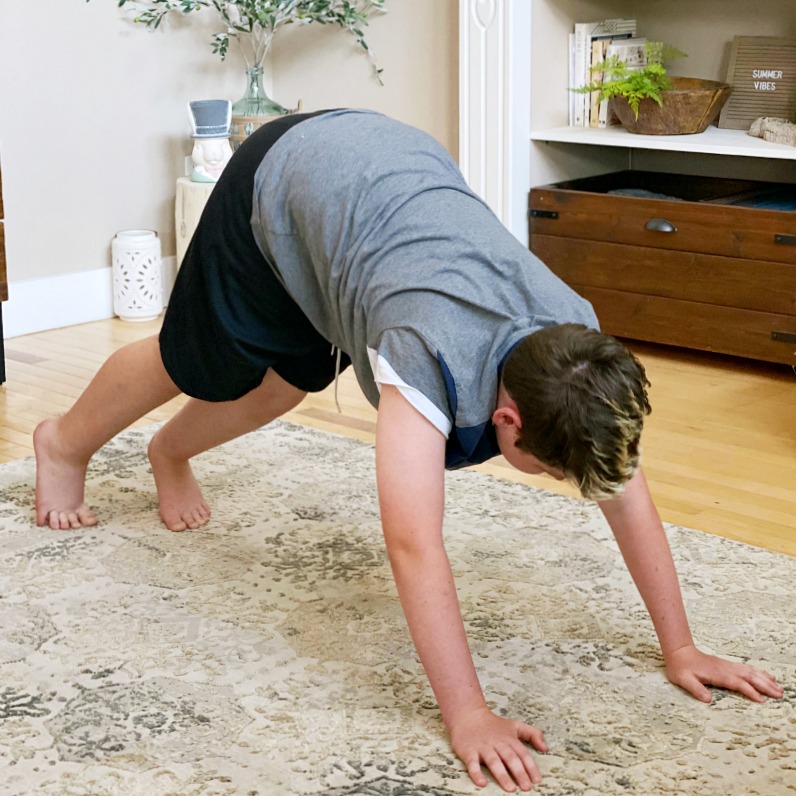
Helpful For: whole body strengthening (especially arms!), scapular stability, core strengthening, calf and hamstring flexibility, toe walkers
Flamingo Stand/Hops
For the flamingo, you can either work on statically holding a one-legged stance position or add in some hopping. When standing on one leg, focus on standing tall and keeping hips level {i.e. not leaning to one side}. For hopping, just try one hop and then pause and gain control in the one-legged standing position again. Kids can either hop and land on the same leg {harder version} or hop up and land on the opposite leg {easier version}. Either way, the emphasis should be on the control of the one-legged stand position when landing.
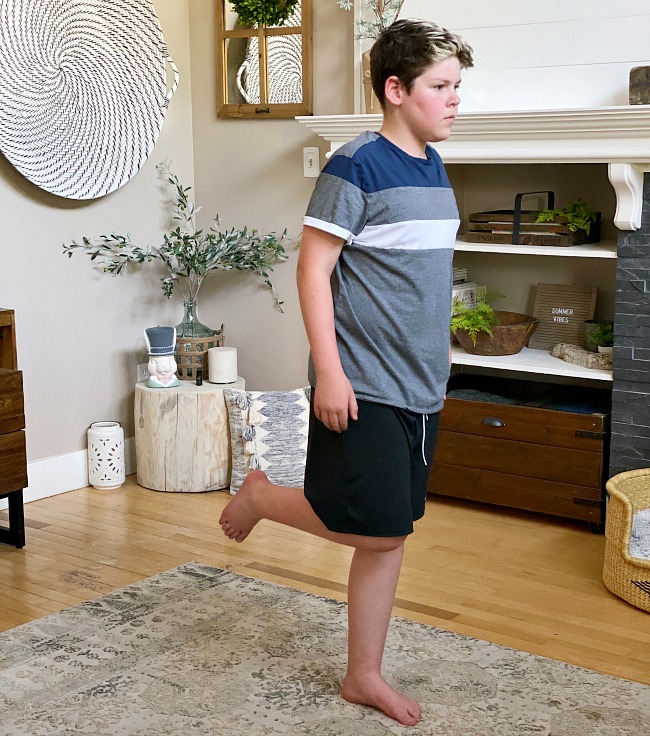
Especially Helpful For: balance, leg strengthening, core strengthening
Duck Walk
Crouch down and waddle like a duck. If this is too difficult, kids can put their hands down to help out. You can also try this activity in more of a low squat instead of crouching all the way down to the ground. Just be sure to stay low and keep the bum down.
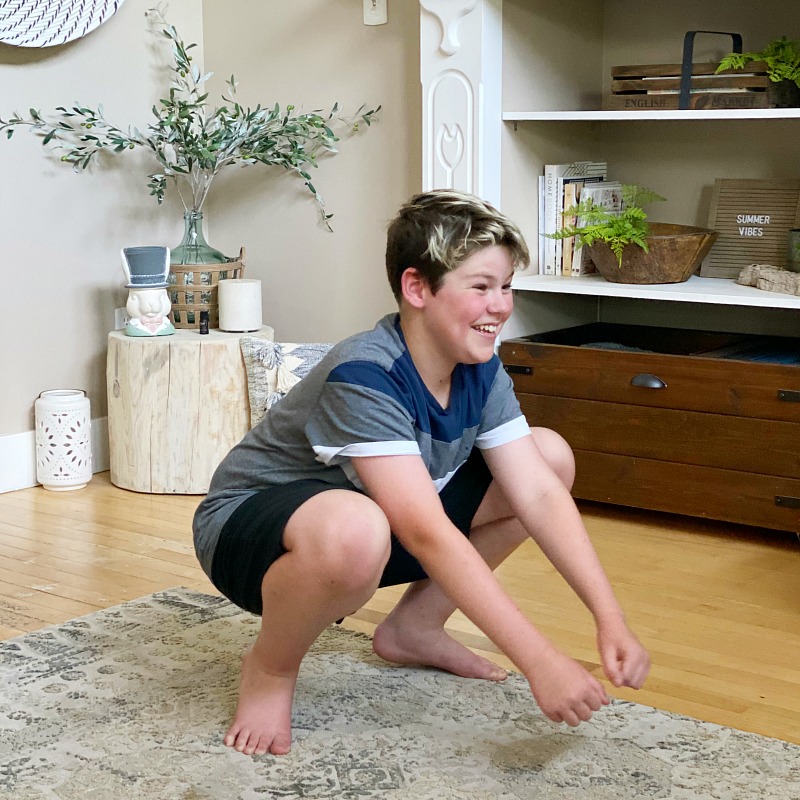
Especially Helpful For: hip, knee and ankle flexibility, core strengthening, lower body strengthening, sensory input {deep pressure}, toe walkers
Penguin Walk
Have your child walk on their heels with toes lifted after the ground. Keep arms by side and waddle like a penguin. This helps to build up the muscles in the front of the lower leg and stretch calf muscles.
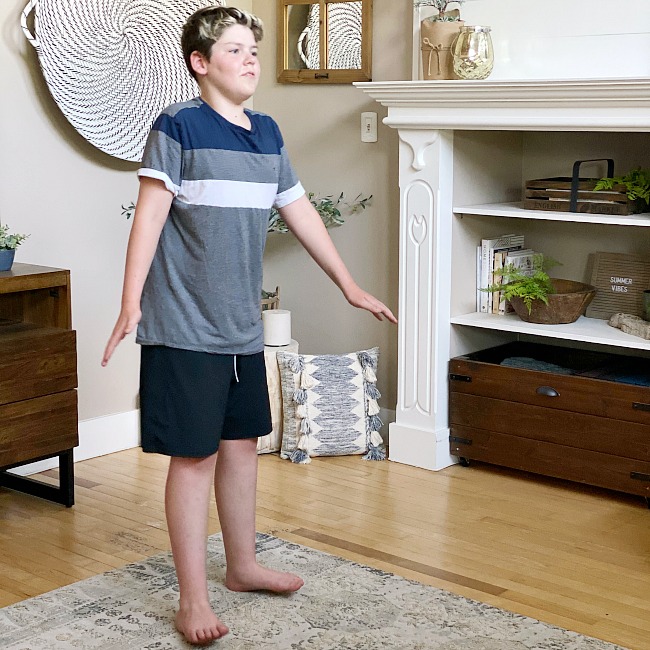
Especially Helpful For: calf flexibility, dorsiflexor strengthening, core strengthening and balance, toe walkers
Frog Jumps
Squat down to ground like a frog and jump up and forwards. Land back down in the squatting position. Focus on jumping as high as possible.
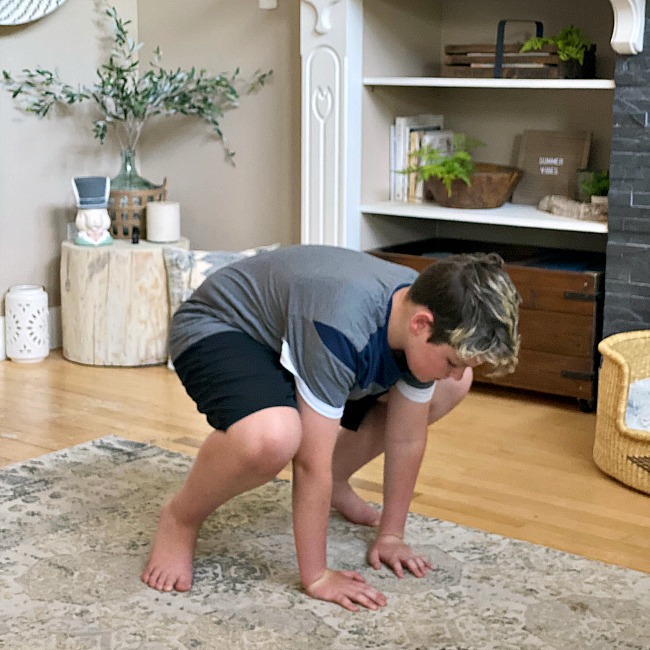
Especially Helpful For: Leg strength, leg mobility, sensory input {joint compression and deep pressure}, core strengtheing
Kangaroo Jumps
Keep feet together and jump forwards. Focus on jumping as far forwards as possible.

Especially Helpful For: Leg strength, sensory input {joint compression}, core strengthening
TIGER PROWL
Start on hands and knees. Get as low as possible and creep forwards like a tiger when it’s hunting.

Especially Helpful For: core strength, trunk flexibility
Inchworm Crawl
Start in a plank position. Walk or jump feet inwards keeping hands stationary. Then walk hands forward back into the plank position. Repeat.
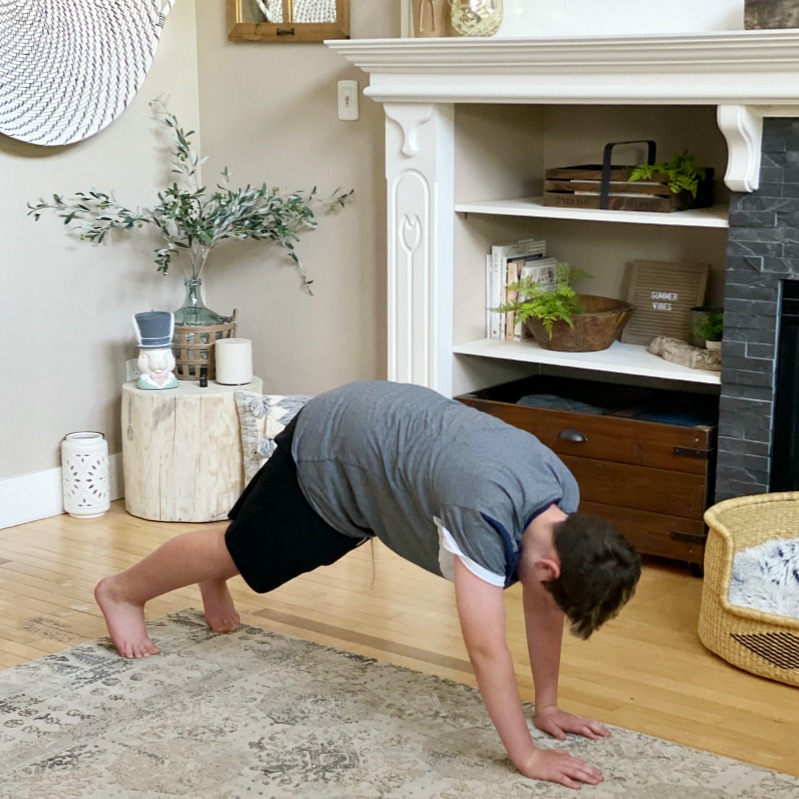
Especially Helpful For: Core strengthening, scapular stability, arm strengthening, leg strengthening, sensory input {joint compression}
GORILLA Shuffle
Squat down into a low squat and shuffle legs forward. Make a fist with hands and touch down to ground. Repeat shuffling around the room. This is a good one to do in a circle to get some more vestibular input. Can also stop and balance in squat position and beat chest like a gorilla.
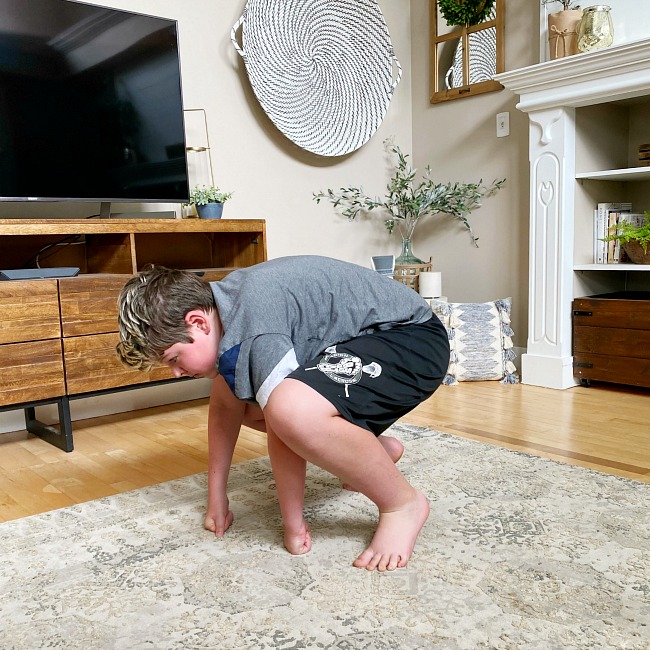
Especially Helpful For: Leg strength, Leg flexibility, core strengthening, sensory input, toe walkers
Snake Slither
Lay on your tummy with arms together straight out in front. Slither like a snake. If this is too difficult you can push a little bit with the elbows.
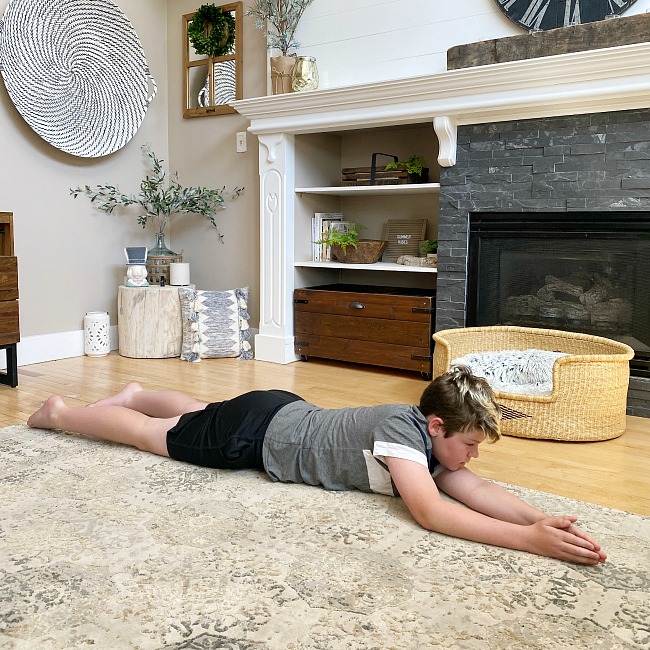
Especially Helpful For: core strengthening, sensory input, shoulder flexibility
ELEPHANT STOMPS
Take big steps stomping like an elephant. Clasp your hands together for a trunk and swing them side to side as you walk.

Helpful for: Increased proprioceptive input for calming, balance, crossing midline
Donkey Kicks
Start in a standing position. Put your hands on the ground and kick both legs up in the air {feet towards bum}.
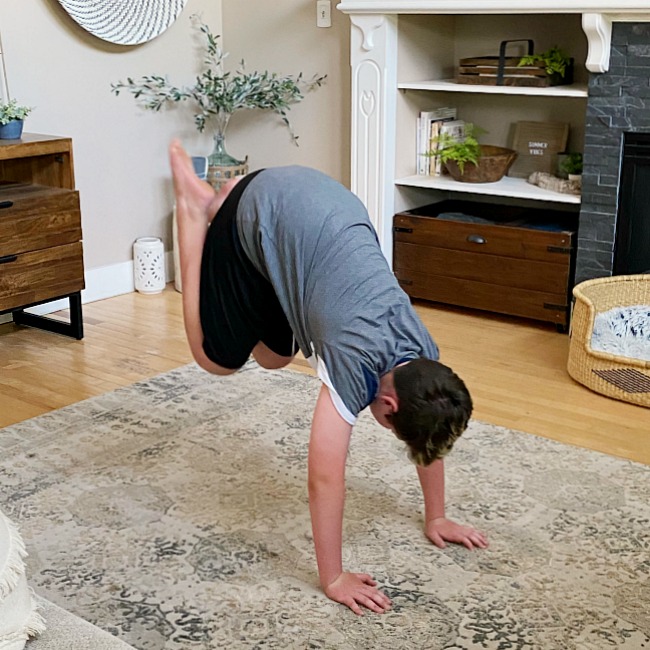
Helpful for: Scapular stability, shoulder and arm strengthening, leg strengthening {especially hamstrings}, balance
Seal Walk
Lay on your tummy, push your hands up until your arms are straight, and move across the floor while dragging your legs. This one’s quite challenging. You can always do a modified seal walk on your forearms or assist with your knees a little to push.
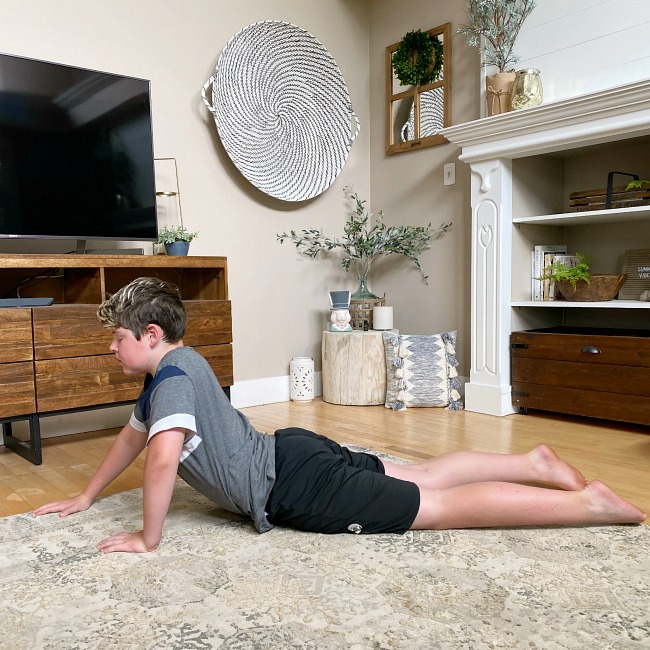
Especially Helpful For: arm strength, scapular stability, core strength, hip flexor flexibiity, sensory input
STAR FISH JUMPS
Start in a standing position. Jump up in the air extending out arms and legs into a star fish position. Try to land back in the standing position. If this is too hard you can just work on a regular jumping jack.
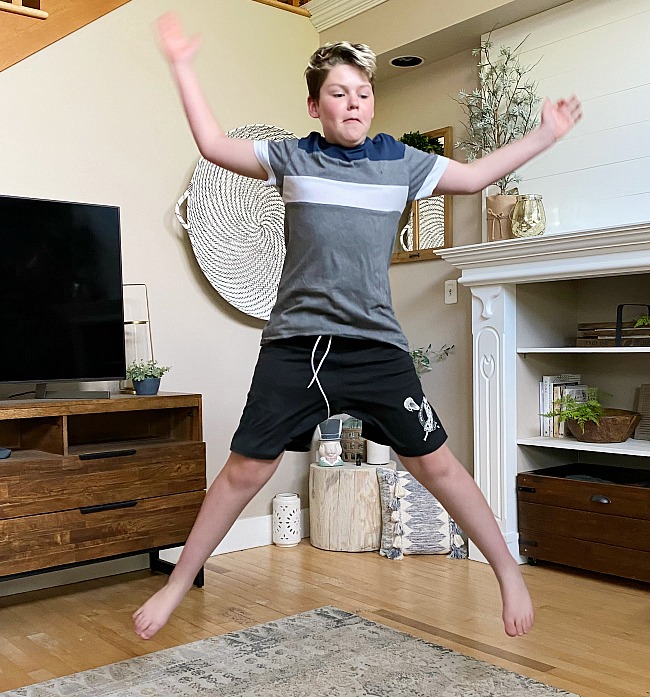
Especially helpful for: coordination, leg strengthening, shoulder strengthening, body awareness, sensory input, and core strengthening
Ideas to Make the Animal Poses More Fun
There are a number ways that these animal poses can be made into activities that are more fun and engaging for kids.
- incorporate the animal positions into a game of Simon Says
- read an animal book and act out the different animals. Get creative if you have to make up some new animals!
- use the poses to act out an animal song or rhyme
- have the kids come up with their own animal poses
- have a race! Kids love to see you join in with them.
- do the animal walks in different directions – forwards, backwards, sideways.
- use a large dice and add an animal picture or word to each side of it. Roll the dice and see what you have to be. You can even use additional number dice to see how long they have to hold it for or how many repetitions they have to do. You can either use multiple dice or add your own numbers to the one die so the numbers are higher (i.e. 7-12).
- do a cardio session. Set a timer for a set amount of time {i.e. 30 seconds} and rotate through the animals {or at least some of them} with minimal rest periods in between.
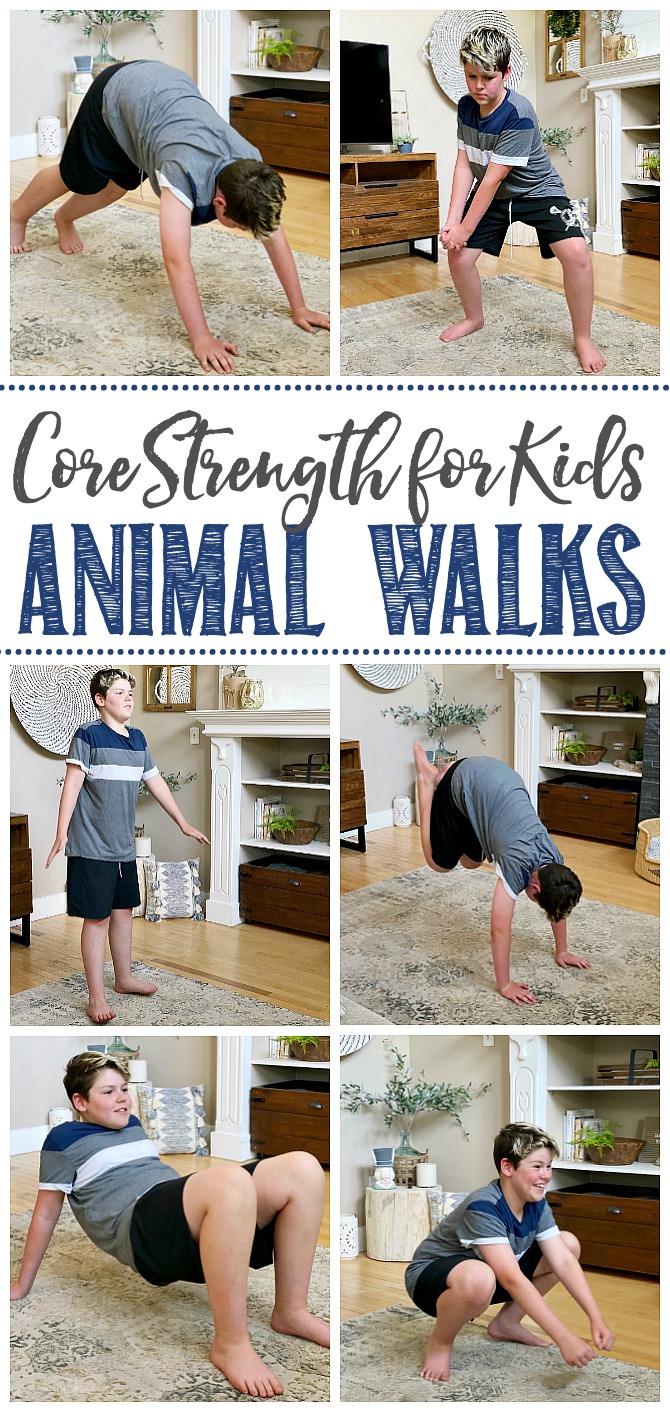
Leave a Reply